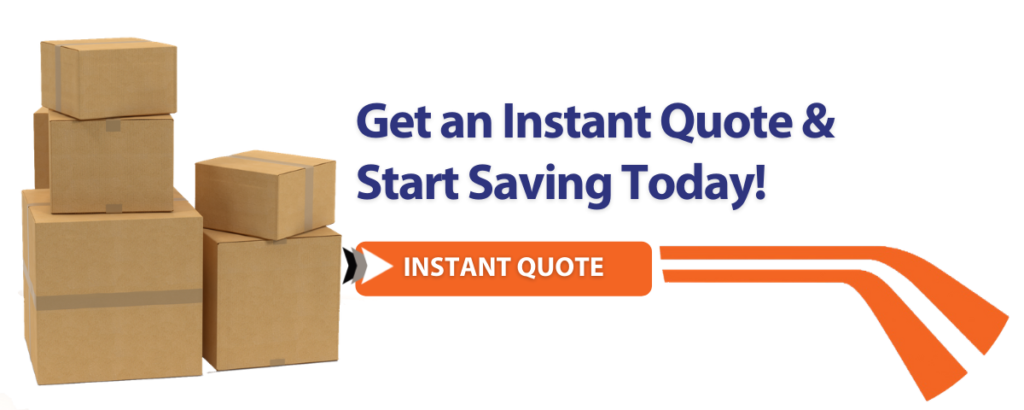
Shipping is one of the most important aspects of running an online business. It’s also one of the most overlooked aspects of marketing.
Did you know that advertising your shipping policies, options and prices through social media, email marketing, search ads and other tactics could yield fantastic results for your ecommerce business?
Shipping is no longer just a cost of doing business — it’s a marketing opportunity for your brand.
With careful planning and execution, you can take shipping from a chore to a key part of your growth strategy. Here’s how to get the biggest bang for your buck.
1. Shift Your Thinking
Treat shipping as a marketing expense rather than a cost of doing business, advises David Bell, marketing professor at the University of Pennsylvania. Your goal, Bell says, should be to “use shipping policies and practices to increase customer satisfaction and create competitive advantage.”
It’s also one of the best opportunities to build customer loyalty. Shipping is something nearly every customer experiences from your business, and it’s an area where you have full control over the details that make an impression on them.
2. Sweat The Details
All the work you put into building your brand and a great product will go to waste if you can’t deliver it in an efficient and cost-effective manner. Shipping is an essential part of the customer experience, and it can make all the difference between a customer who buys online or in person.
According to research from Dun & Bradstreet, 46% of people who have had a poor delivery experience are less likely to purchase from that retailer again in the future.
Pro Tip: Make a habit of “secret shopping” your own site from time to time, to see how all of the shipping aspects of the customer experience can be optimised:
- Are the delivery rates 100% clear before you start shopping, or only at cart or checkout stages?
- Is there a free shipping incentive for email signups?
- How does order tracking fit into your confirmation page and email?
- How fast does the tracking email (and any reminders) hit the inbox?
Paying attention to these details will improve key parts of the buying experience, and in turn, can make a major impact on your conversion rates and sales.
3. Stand Out In The Mailbox
When it comes to shipping, your company can leave a lasting impression on customers with a unique shipping box and packaging, including logos and graphics, custom messages and much more.
Your packaging design should be eye-catching and memorable. And it should look consistent across different mediums to reinforce your brand identity with buyers.
Consumers have largely come to expect free or reduced-rate shipping or expedited delivery options. But they are still delighted when their package includes an unexpected bonus — such as a free gift or special offer. What can you add to your shipment to create these moments of delight?

4. Find Your Ideal Fit
The materials you use to ship products will also influence how customers see your brand.
Your packages should promote your business and reinforce the message you want to convey about your products. Whether it’s brown craft paper or custom luxury boxes, you’ll want to define the fit between your brand and ideal buyers.
When choosing packaging and shipping materials, consider questions like:
- How quickly do you want to get your product to the customer?
- What level of protection does your product require?
- How much does it cost to ship the product?
- How will it be perceived by the customer?
Your packing materials are the first thing customers see when they’re unpacking their order. Use quality materials to create positive feelings about your brand and keep buyers coming back.
5. Test Limited-Time Offers
Few smaller brands offer unlimited free shipping all the time, but how often have you tested different shipping offers to see what your buyers like best?
Without creating more confusion than it’s worth for shoppers, you can try a few small tests with free or tiered shipping offers with emails, email signup overlays/widgets, social media posts/ads, or affiliates.
Testing your shipping offers with these areas, or channels, can help you find a winning offer to roll out across your site and all channels — or avoid getting stuck with the wrong offer/s in those areas.
For example, Free Shipping on orders of $39 or more vs orders of $50 or more.
Pro Tip: Review your order dollar amounts for frequently bundled or bought-together products, as a few dollars difference there could mean heaps more qualifying orders — and sales — when your free shipping threshold is more easily met. (Watch your margins here, of course … see Tip #6.)
Testing these shipping deals should accelerate more than temporary sales: they should also grow your email list, social media and remarketing audiences, and ideally, repeat buyers.
6. Validate The Viability
Smaller businesses can sometimes get so focused on sales and revenue, the impact on margins becomes an afterthought — especially where shipping is concerned.
To avoid those pitfalls, start with the end in mind while you’re testing different shipping offers.
Decide how much you want to spend on shipping. Start with your average order value (AOV) and subtract the cost of goods sold (COGS). It’s also important to factor in any discounts that you might offer from time to time.
What’s left is the amount you have available for free shipping. For example, if your AOV is $50 and your COGS is $30, and you offer a 10% discount on occasion, then you have $15 available for free shipping.
Pro Tip: Looking to increase the average value of your orders? If so, consider free-shipping thresholds, where customers only get free shipping if they spend a certain amount (say $50 or $100). The idea is that people will add more items to their cart to qualify for free shipping.
7. Be Ready For The Returns
Making it easy for customers to ship goods back is an effective way to build trust and encourage them to buy again from you in the future.
A survey by Oracle found that more than 60% of today’s shoppers expect free return shipping. Though you may not offer that option, it helps to know that’s the mindset of today’s shoppers.
The key to managing returns is having a well thought out returns policy and proactively managing customer expectations during the shopping journey. That starts with a clear, easy-to-find return policy page link in your website navigation bar and/or footer and available on every product page.
Ensure your return policy is clearly stated on checkout and confirmation pages and order confirmation emails. This helps set expectations, so buyers aren’t surprised or confused if they need to initiate a return later. Plus, this can also help reduce the frustration that can lead to negative online reviews.
Remember, managing customer expectations doesn’t end at checkout.
Today’s buyers are choosier than ever and competition for their dollars is mounting. Having a solid shipping strategy in place will help to make sure you capture your share of the market.
Transdirect is there to help you make the most of your shipping offers by getting the lowest rates on the big name couriers.
No lock-in contracts, no monthly fees, no subscriptions.
Open a free member account and start saving today.
